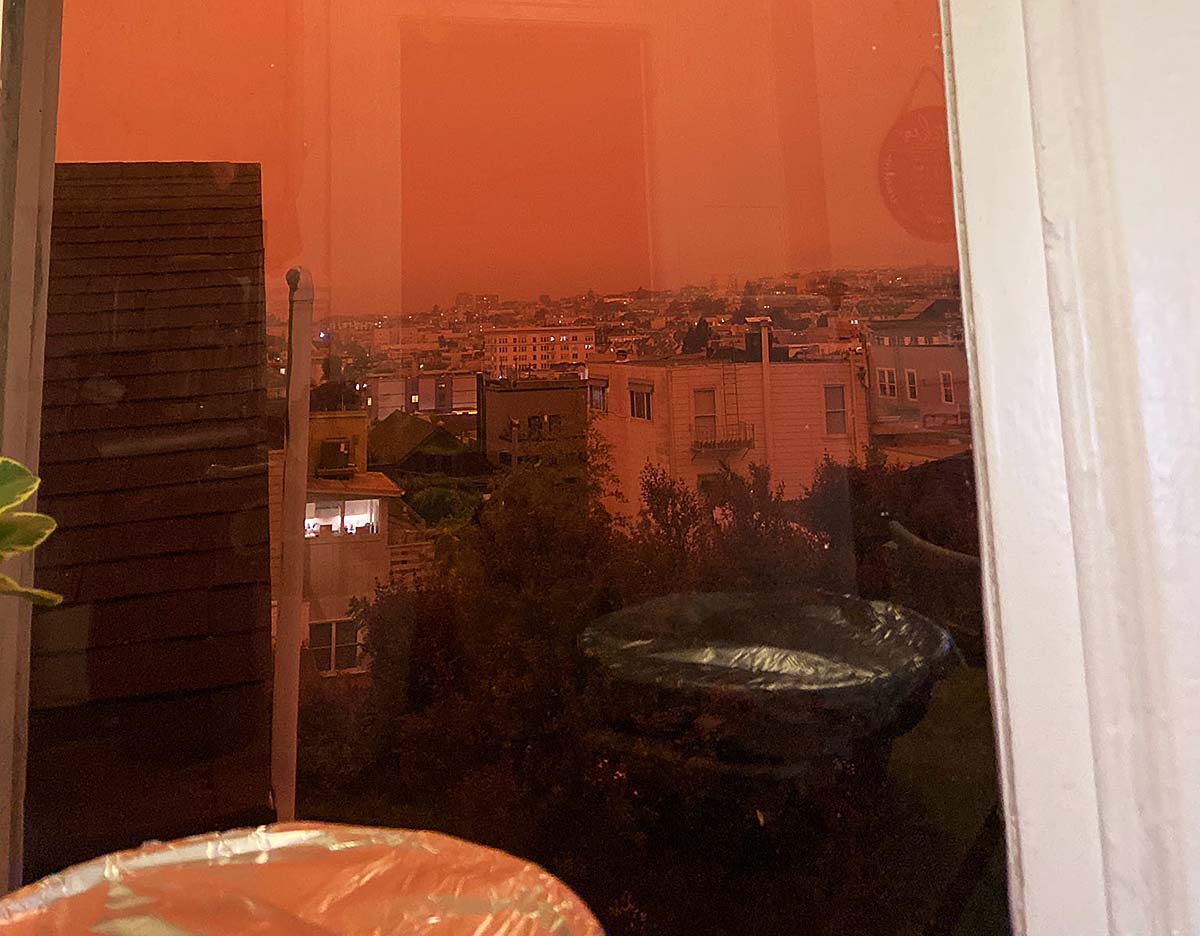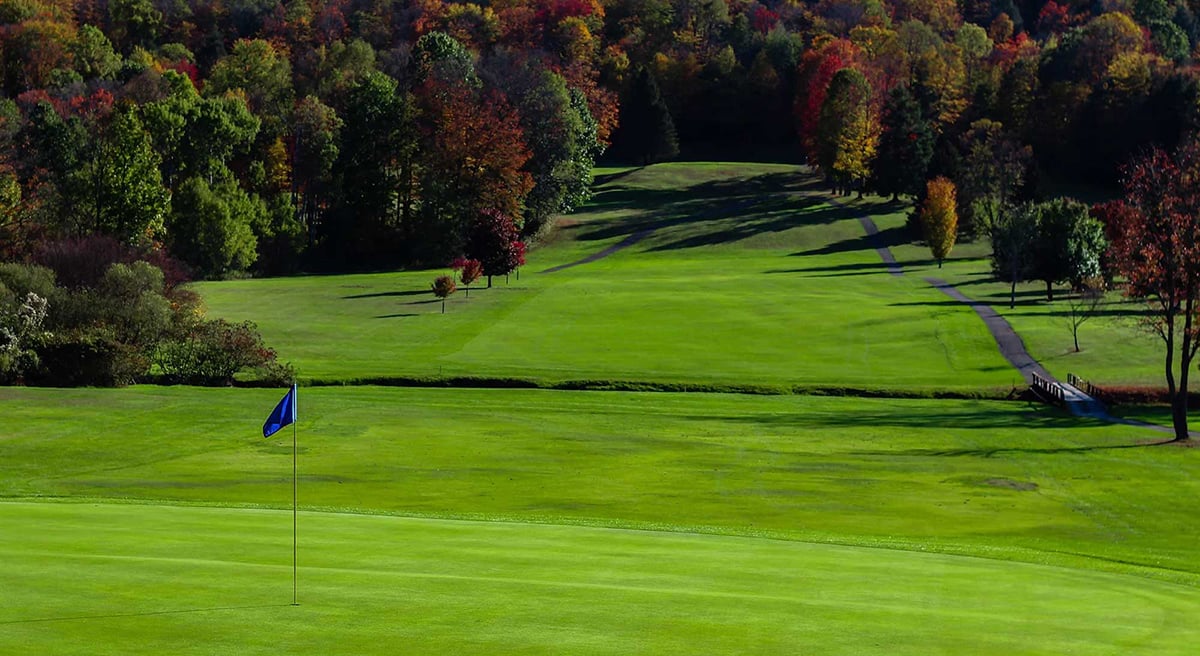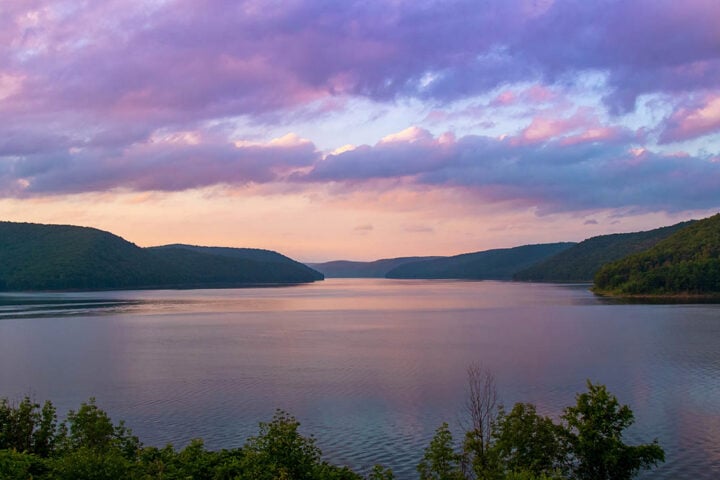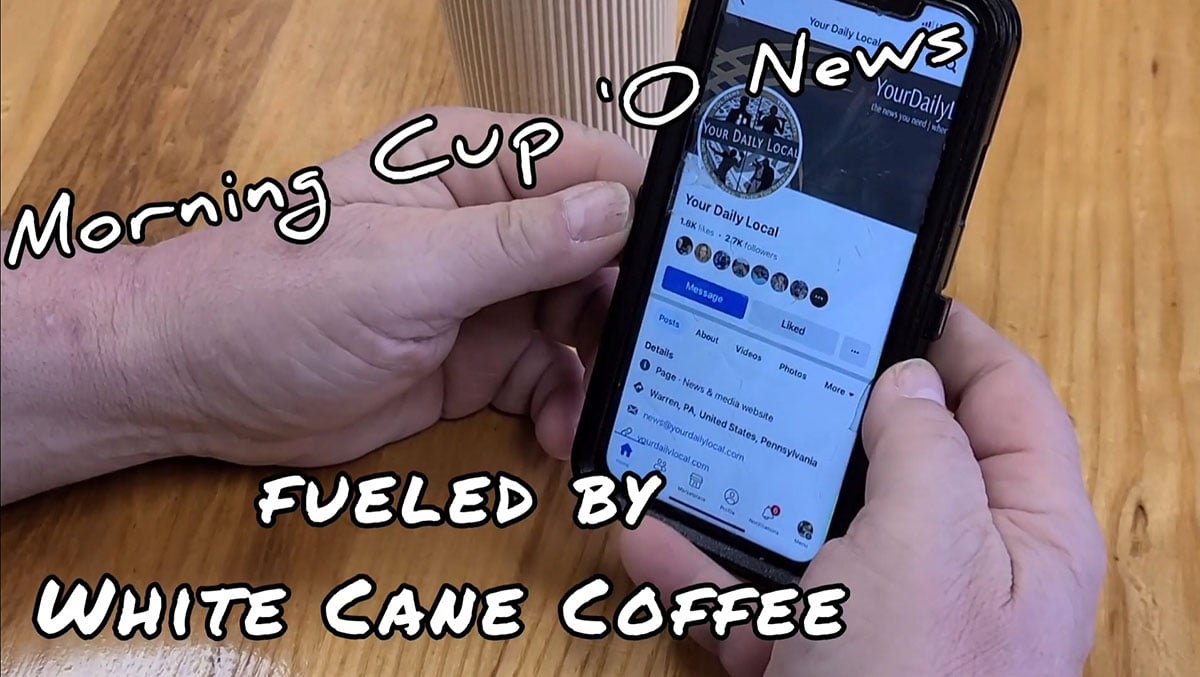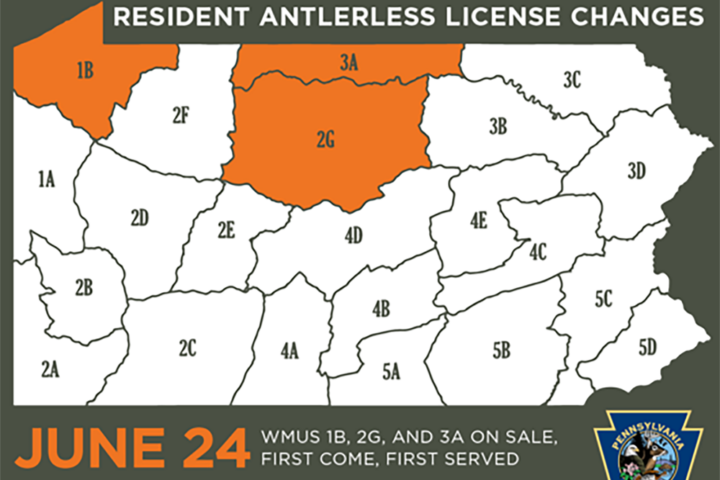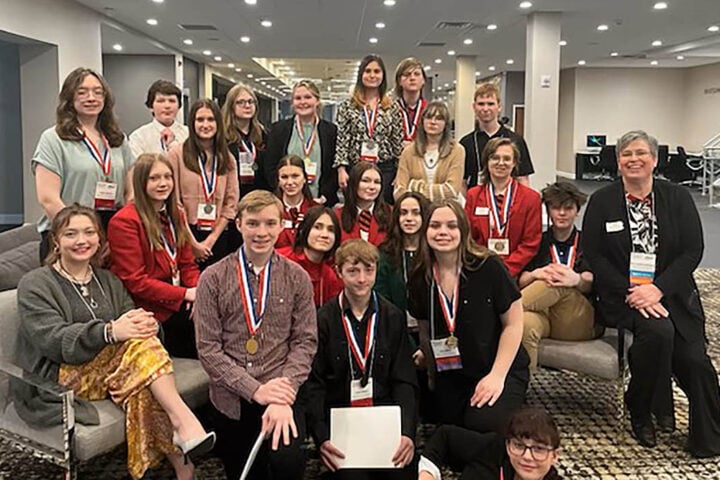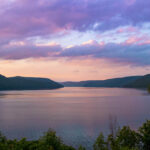Last week, Warren County residents may have noticed a haze around the sun.
While odd, it was nothing compared to what Warren native Allie Morrison woke up to in San Francisco on Sept. 9. Due to the size and volume of wildfires burning throughout California, the sky that morning turned orange, and stayed that way until late evening.
(Photo courtesy Allie Brothers. San Franciscans, including Warren native Allie Morrison, woke to an orange sky on Sept. 9, 2020 due to the size and volume of wildfires burning in California. This photo was taken at 10 a.m.)
“It felt like a fever dream,” Morrison said. “It looked like we were living on Mars.”
Despite the orange tint, the phenomenon created a near pitch darkness even at the height of the midday sun.
“There was no sunlight coming through,” Morrison said. “Even at 2 o’clock in the afternoon, if we turned the lights off in the house it was pitch dark. I can’t quite describe the eerie, apocalyptic feeling it gave me because I had never experienced anything like it.”
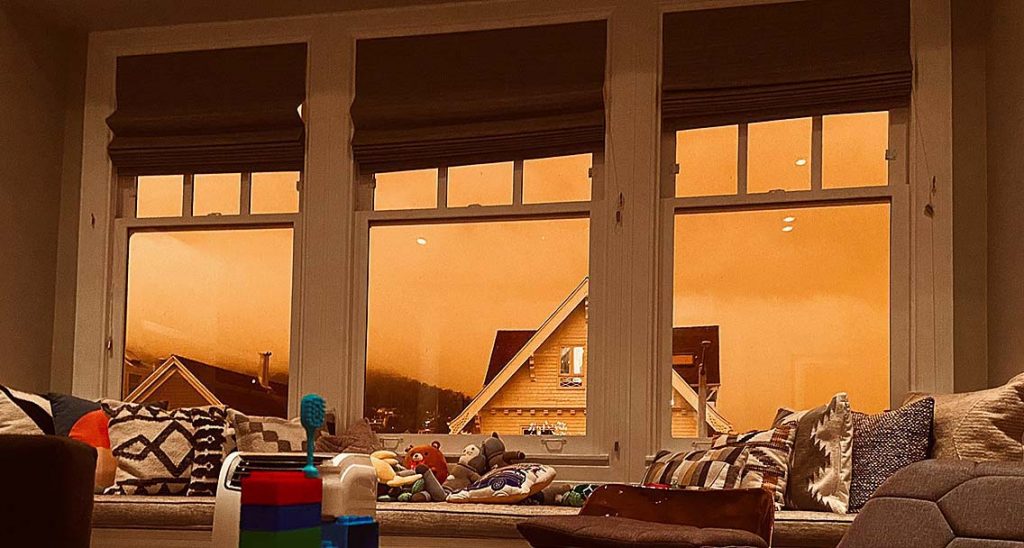
(Photo courtesy Allie Morrison. The orange tint San Franciscans woke to Sept. 9, 2020 continued throughout the day. This photo was taken at 12:10 p.m.)
There’s a scientific reason for the apocalyptic scene. Smoke particles from the wildfires filtered out the blues from the sun’s light and left only the oranges and reds to show through.
“Visible light or sunlight is a combination of all the colors of the rainbow, from red to violet, and when we have particles in the air they can act as filters and can scatter certain colors out,” Air District meteorologist Jarrett Claiborne told Newsweek. “With smoke, for example, that’s filtering out other colors allowing red, orange, and yellow to reach the surface, so that’s why we have those colors this morning.”
The science of why was of little comfort to those in the Bay Area.
“The sky was orange from the time I woke up at about 6:45 am until probably 5 p.m. when it changed to more of a yellow color,” Morrison said. “The sun was nowhere to be found the entire day, even when the orange tinge started to fade. We haven’t had a clear sky since; even when we can see the sun behind the smoke it’s an eerie bright red color that looks like something out of Star Wars.”
Firefighters are currently battling 27 wildfires throughout California.
“Since the beginning of the year, there have been well 8,000 wildfires that have burned over 3.6 million acres in California,” the California Department of Forestry and Fire Protection said on its website. “Since August 15, when California’s fire activity elevated, there have been 26 fatalities and over 6,500 structures destroyed.”
The fires closest to Morrison in the Bay Area include:
- SCU Lightning Complex: encompasses Contra Costa, Alameda, Santa Clara San Joaquin, Merced, and Stanislaus Counties. It has burned 396,624 acres and is 98 percent contained.
- CZU Lightning Complex: encompasses San Mateo and Santa Cruz Counties. It has burned 86,509 acres and is 99 percent contained. There has been one fatality in this fire and it has destroyed 1,490 structures.
- LNU Lightning Complex: encompasses Napa, Lake, Sonoma, Colusa, Solano, and Yolo Counties. It has burned 363,220 acres and is 98 percent contained.
“There are fires burning on nearly all sides of us,” Morrison said. “These only account for a few of the seemingly countless fires burning up and down the west coast, which all contribute to the huge cloud of smoke.”
Though the three fires closest to Morrison are nearly fully contained, that doesn’t mean they have stopped burning. Containment means firefighters have been able to form a perimeter line around the fire to stop the spread. The fire can still rage inside the containment line for weeks.
Continued burning means more smoke and decreased air quality.
“The bad air quality is the number one thing about the fires that is affecting my day to day life,” Morrison said.
Being forced to spend most days indoors would be unpleasant in a normal year. In 2020, with the COVID-19 pandemic forcing shutdowns and tight restrictions, it’s even worse.
“Due to coronavirus, the only things that are really open for recreational activity in the city are outdoor spots like parks, and restaurants with outdoor seating,” Morrison said. “Now that the air quality is bad enough that we are highly advised to stay inside as often as possible, those places aren’t options either. I think I’ve spent a total of 10 minutes or so outside over the past four days, because the air quality is so bad that outdoor activity isn’t enjoyable or healthy.”
Morrison said residents are often checking air quality through news channels and websites to determine how much time they feel comfortable spending outside. Being inside, even with air purifiers, she said, sometimes isn’t enough.
“Even before you could see the smoke in the air like you can now, you could smell it,” she said. “Especially first thing in the morning, even in rooms with air purifiers you could definitely smell the smoke.”
The experience has been a novel one for Morrison, who’s been in San Francisco for a little more than a year. But even lifelong residents, she said, were in disbelief when the sky turned orange.
“I don’t even think the experts knew that neon orange sky would happen,” Morrison said. “Many people who have lived in the Bay Area their entire lives have said they’ve never seen anything like it.”
The hazy sun in Warren County was caused by smoke from the wildfires, according to the National Weather Service. The smoke entered the upper atmosphere and traveled east, eventually coming through the skies in Warren County Sept. 14-16.
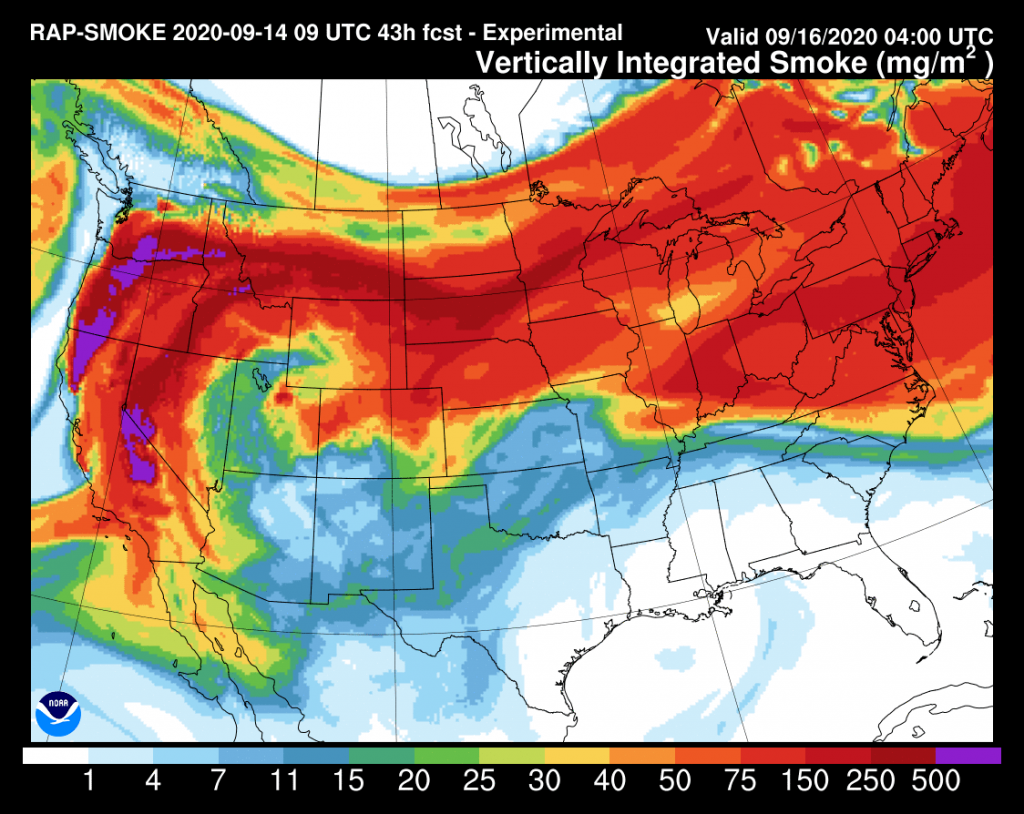
(Graphic courtesy the National Weather Service. This graphic shows how smoke from wildfires on the west coast entered the upper atmosphere and traveled east.)
Morrison’s hope is that being affected by these fires, even in a minor way, will encourage people to pay more attention to the issues causing their severe nature.
“It’s definitely something that I’d love for people back home to pay more attention to,” she said. “Because the sooner people see and recognize the effects of the climate crisis, the more likely we’ll be able to prevent these things from getting worse and worse in the entire country and world, not just California.”















